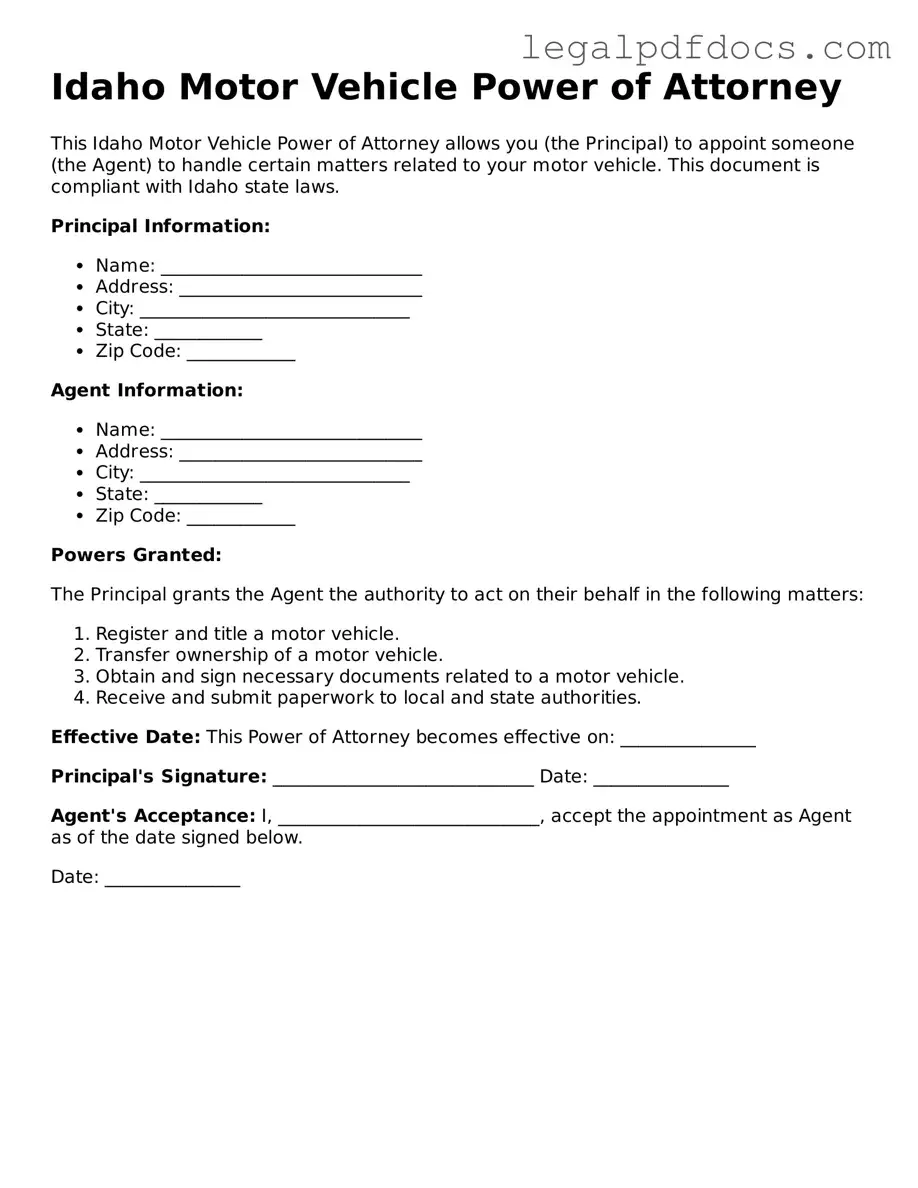Official Motor Vehicle Power of Attorney Form for Idaho
The Idaho Motor Vehicle Power of Attorney form allows an individual to authorize another person to act on their behalf regarding motor vehicle transactions. This legal document can simplify processes such as title transfers, registration, and other vehicle-related matters. To get started, fill out the form by clicking the button below.
Open Motor Vehicle Power of Attorney Editor Here
